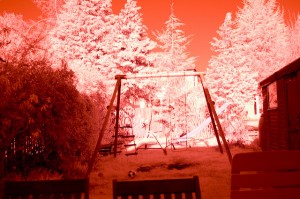Direct doping glass may lead to new materials
If your casual discussions with friends don’t revolve around upconversion nanocrystals, you’re probably in good company. Very good company. What are upconversion nanocrystals, and what to they have to do with glass?
Infrared light has longer wavelengths than visible light. If we could see it, we would find it beyond the red edge of visible light. About half of the Sun’s energy that reaches the Earth is infrared. Molecules absorb and emit infrared energy, which makes IR energy useful for sensors and detectors. Infrared energy is used in night vision equipment, astronomy and to control equipment.
Generally speaking, lightwaves are what they are. Ultraviolet and infrared light are transmitted from the Sun as part of the “full-spectrum” but our eyes can’t see them directly. They are invisible frequencies, although we can see (and feel) their effects.
So, enter upconversion nanocrystals, which have the ability to “convert” invisible IR light to visible light. Lanthanide-doped nanoparticles have been around since the 1990’s and they (along with a select few other elements) turn out to be reasonably good at converting IR wavelengths into visible light.
This conversion is important because it can enable new sensing techniques. The trouble is that the particles need to be suspended precisely in order to be useful. Glass and ceramics are great media for suspending things, but if you know anything about the way glass operates at the molecular level, you know that it’s kind of random. So far, glass and ceramics have proven to be both enticing and problematic when it comes to integrating upconversion nanocrystals.
Earlier this summer, Australian researchers announced that they have developed a technique to introduce upconversion nanocrystals into glass in such a way that overcomes the challenges they encountered when using ceramics and other types of glass. The development could lead to new advances tumor detection and other biomedical applications, remote radiation sensing and 3-dimensional displays.
Glassprimer™ glass paint is a specialized glass coating that bonds permanently to glass surfaces. GlassPrimer also makes a glass surface molecular activator that is designed to work with UV-inkjet glass printing processes. For more information about Glassprimer™ glass paint, please visit the rest of our site. If you’d like to purchase Glassprimer™ glass paint, please visit our online store.
Photo Credit: David Merrigan, via Flickr.com



